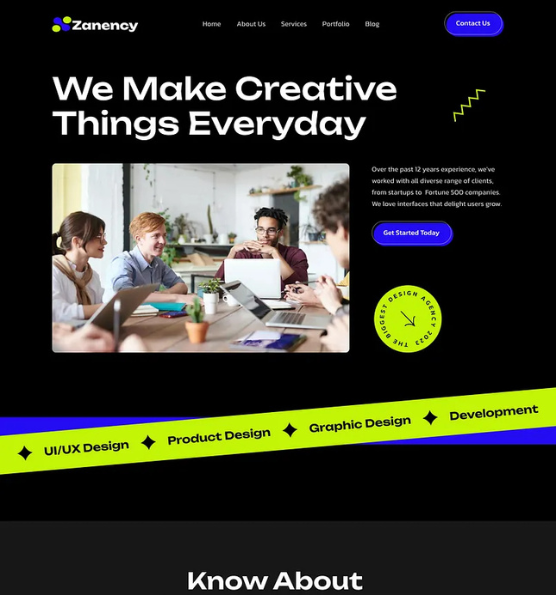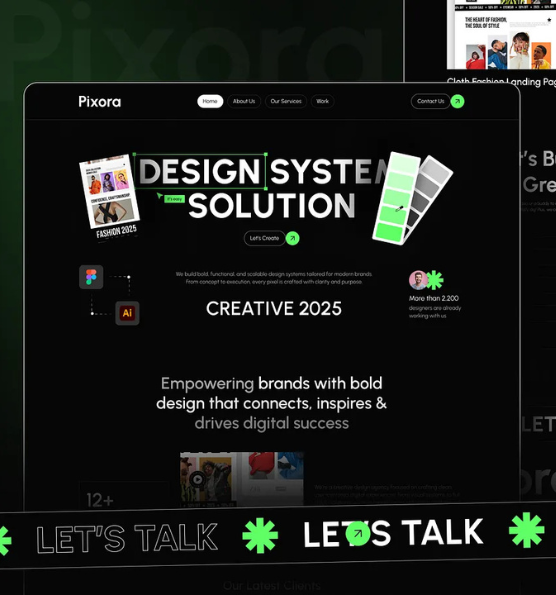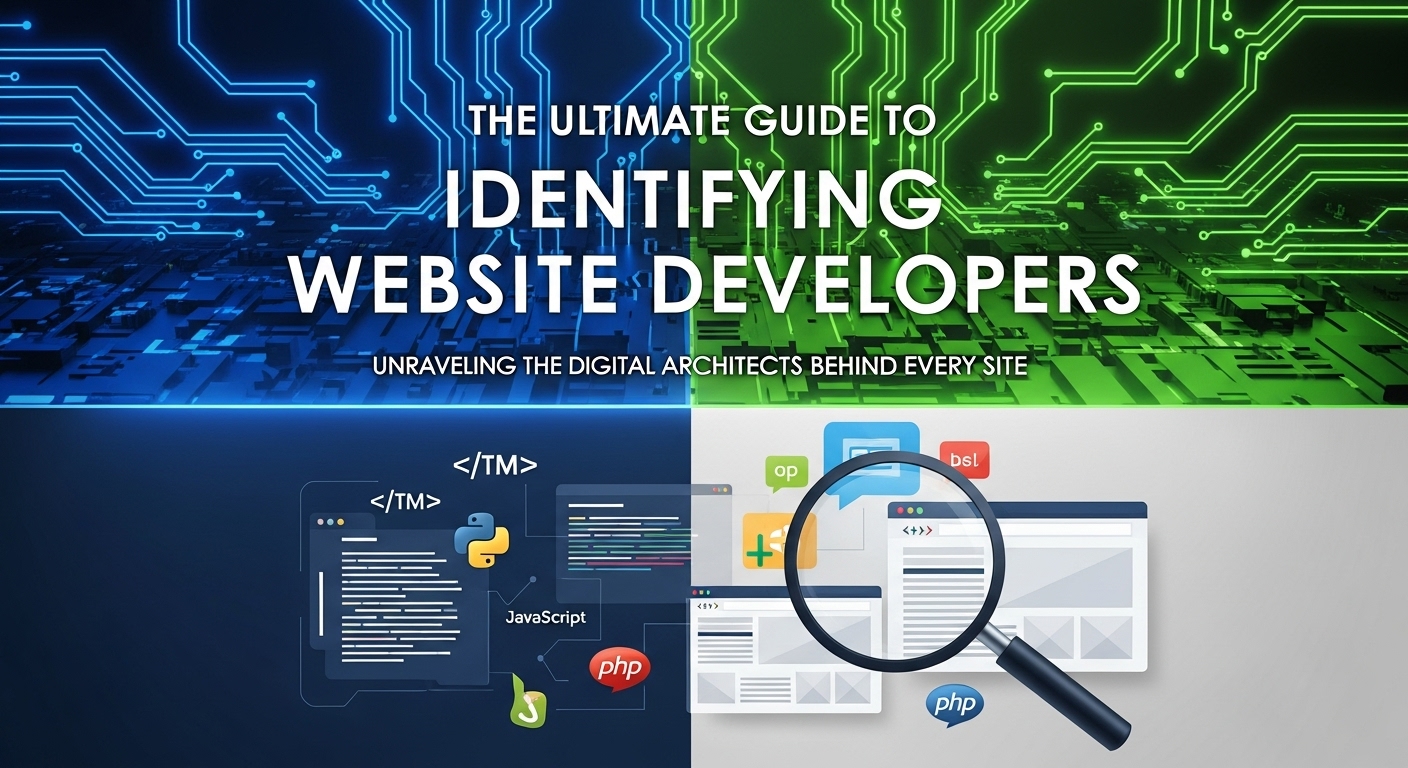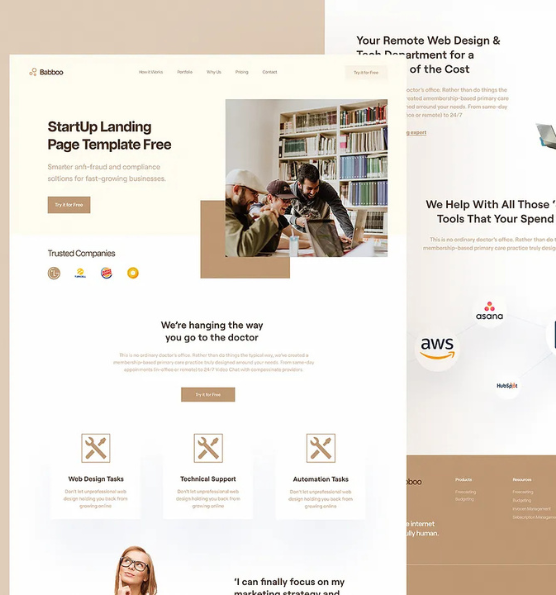Best Digital Marketing Services for Business Growth
Peak Media – Driving Business Growth with Expert Digital Marketing!
Peak Media delivers top digital marketing services that transform businesses. Our expert consultancy helps companies boost online presence, generate leads, and maximize ROI with proven results.





Get Your Personalized
Digital Marketing Proposal:
Tell us about your business goals. Peak Media’s consultancy team will create a custom digital marketing proposal that drives results and accelerates your growth.



Our Comprehensive
Digital Marketing & Strategy Solutions
As a leading digital marketing agency, we offer tailored strategy solutions that increase conversions and return on investment.
A Trusted Digital Marketing Partner For Your Business
Peak Media is a certified partner with industry-leading platforms including Microsoft, Google, Meta, and Shopify, ensuring our digital marketing services deliver maximum results through proven technology solutions.




Our Digital Marketing Track Record & Results
Peak Media’s digital marketing services have delivered exceptional results across 300+ projects. Our proven consultancy approach has driven above average growth rate for clients, making us a top choice for businesses nationwide.
Our Proven Digital Marketing Strategy Process
1. Requirements
We analyze your business goals and digital marketing needs to create a comprehensive strategy that aligns with your objectives and target audience for maximum results.
2. Project Plan
Our expert team develops a detailed digital marketing strategy plan with timelines, milestones, and KPIs to ensure successful delivery of top digital marketing services.
3. Creation
Peak Media executes your custom digital marketing consultancy solutions, creating compelling content, campaigns, and assets that drive growth and deliver measurable ROI.
Industry-Leading Technology Partners & Integrations








Peak Media provides complete digital marketing services including website design, social media marketing, SEO, content writing, brand management, and customized digital marketing strategies tailored to each business.
Our digital marketing strategy services include audience research, competitor analysis, SEO planning, paid campaign strategy, and content optimization. These help improve your online visibility, increase traffic, and generate more conversions.
Peak Media’s consultancy services include website audits, SEO improvements, social media planning, marketing roadmap creation, and overall guidance to grow your brand effectively and sustainably.
Yes. Peak Media provides specialized digital marketing solutions for financial services, including compliance-friendly content, targeted campaigns, professional website development, and strategies focused on building trust with clients.
Absolutely. Peak Media builds professional, modern, responsive, and SEO-friendly websites designed to strengthen your brand identity and improve overall user experience.
Yes. Peak Media offers high-quality content writing services including blog writing, article writing, business plans, autobiographies, press releases, and personal brand content—all optimized for SEO and audience engagement.
Peak Media's Digital Marketing Knowledge Hub
Stay ahead with Peak Media’s latest digital marketing strategy insights and expert tips. Our blog features proven tactics, industry trends, and best practices from our top digital marketing consultancy team to help your business grow.

November 19, 2025
How to Find a Good Website Developer: A Complete Guide
In today's digital landscape, your website is often the first impression potential customers have of your business. Whether you're launching a startup, expanding your online presence, or revamping an outdated site, finding a good website developer can make or break your digital success. But with countless developers claiming to be the best, how do you separate the truly skilled professionals from the rest? The process of finding the right website developer doesn't have to be overwhelming. With the right approach and knowledge of what to look for, you can connect with a professional who understands your vision and has the technical expertise to bring it to life. Understanding Your Website Needs First Before you even begin your search for a website developer, take time to clarify what you actually need. Are you looking for a simple informational website, an e-commerce platform, or a complex web application? Different developers specialize in different areas, so understanding your requirements will help you narrow down your options effectively. Consider your budget, timeline, and long-term goals. A good website developer will want to understand these factors upfront to ensure they can deliver a solution that meets both your immediate needs and future growth plans. Key Qualities of a Good Website Developer Technical Expertise and Portfolio A reliable website developer should have a robust portfolio showcasing their previous work. Don't just glance at the designs—dig deeper. Visit the live websites they've built, test their functionality, check loading speeds, and see how they perform on mobile devices. This hands-on research reveals far more than screenshots ever could. Look for developers who stay current with technology trends. The web development landscape evolves rapidly, and a good developer invests time in learning new frameworks, security protocols, and best practices. Communication Skills Technical brilliance means nothing if your developer can't communicate effectively. A good website developer listens to your ideas, asks clarifying questions, and explains technical concepts in language you can understand. They should be responsive to your messages and provide regular project updates without you having to chase them down. Problem-Solving Ability Website development inevitably involves challenges and unexpected obstacles. The best developers approach problems with creativity and persistence rather than making excuses. Ask potential developers about difficult projects they've handled and how they overcame obstacles. Their answers will reveal their problem-solving approach. Where to Find Quality Website Developers Professional Development Agencies Working with established agencies often provides added security and comprehensive services. Professional firms typically have teams with diverse skill sets, ensuring your project benefits from multiple perspectives and expertise areas. If you're looking for comprehensive website development services, partnering with an experienced agency can provide the full-stack solutions your business needs. Freelance Platforms and Referrals Platforms like Upwork, Toptal, and Fiverr host thousands of website developers with varying skill levels. While these platforms offer convenience, they require careful vetting. Read reviews thoroughly, check ratings, and always review portfolios before making contact. Personal referrals remain one of the most reliable ways to find a good website developer. Ask other business owners, colleagues, or industry contacts about their experiences. A developer with a proven track record of satisfied clients is more likely to deliver quality work. Questions to Ask Potential Developers When interviewing candidates, ask about their development process. How do they handle revisions? What happens if you're not satisfied with the results? Do they offer post-launch support and maintenance? A professional website developer will have clear answers to these questions and documented processes. Inquire about their approach to responsive design, website security, and search engine optimization. These elements are crucial for modern websites but are sometimes overlooked by less experienced developers. Red Flags to Avoid Be cautious of developers who promise unrealistic timelines or refuse to provide references. Avoid those who use overly technical jargon to confuse rather than educate, or who demand full payment upfront without milestones. A good website developer is transparent about processes, realistic about timelines, and confident enough in their work to offer guarantees or revision policies. Making Your Final Decision After researching, interviewing, and comparing options, trust your instincts alongside the facts. The right website developer combines technical skills with professionalism, clear communication, and a genuine interest in your project's success. Remember that the cheapest option rarely delivers the best value. Quality website development is an investment in your business's future. A well-built website can generate leads, increase sales, and strengthen your brand for years to come. Finding a good website developer requires patience, research, and clear communication about your needs. By focusing on proven expertise, strong portfolios, effective communication, and professional business practices, you'll be well-equipped to make an informed decision. Your website is too important to leave to chance—take the time to find a developer who can transform your digital vision into reality.
Read More
November 17, 2025
When and Why Your Business Needs a Website Redesign
Is your website working as hard as it should for your business? Many companies continue operating with outdated websites, unknowingly losing customers, revenue, and competitive advantage every single day. Understanding when to invest in website redesign services can be the difference between thriving online and falling behind your competition. What is a Website Redesign? A website redesign goes beyond simple cosmetic updates. It's a comprehensive overhaul that improves visual design, enhances functionality, optimizes user experience, and aligns your digital presence with current business goals. Unlike minor updates or content refreshes, a redesign fundamentally transforms how your website looks, feels, and performs. Professional redesigns address both front-end elements that visitors see and back-end systems that power your site, ensuring everything works together seamlessly to achieve your business objectives. If you're looking for comprehensive website development services, expert teams can guide you through the entire redesign process. Clear Signs You Need a Website Redesign Recognizing the signs you need a website redesign helps you take action before losing valuable opportunities: Outdated Visual Design: If your website looks like it was built five years ago, it probably was. Design trends evolve rapidly, and what seemed modern in 2020 now appears dated. Visitors judge your business credibility within seconds of landing on your site. An outdated design signals that your company isn't keeping pace with industry standards. Poor Mobile Experience: Over 60% of web traffic comes from mobile devices. If your site doesn't display properly on smartphones and tablets, or if users must pinch and zoom to read content, you're frustrating the majority of your audience. Google also penalizes mobile-unfriendly sites in search rankings. Slow Loading Speed: Page speed directly impacts bounce rates and conversions. If your site takes more than three seconds to load, you're losing potential customers. Slow performance stems from bloated code, unoptimized images, outdated hosting, or inefficient databases—all fixable through proper redesign. High Bounce Rate: When visitors leave immediately after arriving, your website isn't engaging them effectively. High bounce rates indicate poor user experience, irrelevant content, confusing navigation, or design that doesn't match visitor expectations. Declining Search Rankings: If your organic traffic has dropped significantly, outdated technology, poor mobile optimization, or lack of modern SEO best practices might be responsible. Search engines favor websites that provide excellent user experiences and follow current technical standards. Difficult Content Management: Struggling to update your own website wastes time and money. If simple changes require developer assistance or your content management system feels clunky and outdated, a redesign with a modern CMS streamlines operations. Not Converting Visitors: Ultimately, your website should drive business results. If traffic doesn't translate into leads, sales, or desired actions, your site isn't effectively guiding visitors through conversion funnels. Benefits of Website Redesign Investing in professional website redesign services delivers substantial returns: Improved User Experience: Modern navigation structures, intuitive interfaces, and clear calls-to-action guide visitors smoothly toward conversion points. When users easily find what they need, they're more likely to take desired actions. Professional website development services ensure your redesign prioritizes user experience at every touchpoint. Better Search Engine Rankings: Redesigns implementing current SEO best practices, mobile optimization, fast loading speeds, and proper technical structure help your site rank higher in search results, driving more organic traffic. Increased Conversion Rates: Strategic redesigns focus on removing friction points, clarifying value propositions, and optimizing conversion paths. Even small improvements in conversion rates significantly impact revenue. Enhanced Brand Perception: Your website is often the first impression potential customers have of your brand. A professional, modern design builds trust and credibility, positioning your business as an industry leader. Competitive Advantage: While competitors stick with outdated websites, your fresh, high-performing site captures market share and positions you as the forward-thinking choice. Mobile Optimization: Redesigns prioritizing mobile experience ensure every visitor enjoys seamless browsing regardless of device, expanding your potential customer base. Improved Security: Modern websites include current security protocols protecting both your business and customer data from increasingly sophisticated cyber threats. Understanding the Website Redesign Process Professional website redesign process typically includes these phases: Discovery and Analysis: Reviewing current site performance, identifying problems, researching competitors, defining goals, and establishing success metrics. Strategy Development: Creating comprehensive plans for information architecture, user flows, content strategy, and technical requirements. Design Phase: Developing wireframes and mockups that visualize the new design, ensuring alignment with brand identity and user expectations. Development Phase: Building the redesigned site using modern technologies, implementing responsive design, and integrating necessary functionalities. Content Migration: Transferring existing content, optimizing for SEO, and creating new content where needed to fill gaps. Testing and Quality Assurance: Thoroughly testing across devices, browsers, and scenarios to ensure flawless performance before launch. Launch and Optimization: Deploying the new site, monitoring performance, and making data-driven adjustments to maximize results. Website Redesign Cost Considerations Website redesign cost varies significantly based on complexity, features, and scope. Small business redesigns might range from $5,000 to $15,000, while mid-sized company projects typically cost $15,000 to $50,000. Enterprise-level redesigns with extensive functionality can exceed $100,000. Cost factors include design complexity, custom functionality requirements, content volume, integrations with other systems, and ongoing maintenance needs. While investment seems substantial, the return from improved conversions, better user experience, and competitive positioning typically justifies the expense within months. Your website is your most important marketing asset. When it's outdated, slow, or failing to convert visitors, every day without redesign costs you money and opportunities. Recognizing the signs you need a redesign and partnering with experienced professionals transforms your digital presence into a powerful business growth engine. Don't let an underperforming website hold your business back. The right redesign investment pays dividends through increased traffic, higher conversions, and stronger brand perception. Partnering with experienced website development services ensures your redesign delivers maximum ROI.
Read More
November 12, 2025
The Ultimate Guide to Identifying Website Developers
Having a strong online presence is no longer just nice to have; it's necessary in today's digital-first world. Finding the right website developer can make or break your online success, whether you're starting a new business, growing your current one, or updating an old website. This complete guide will show you everything you need to know about hiring a web developer who can make your ideas a reality. What a Website Developer Does A website developer does a lot more than just write code. They are the digital world's architects and engineers, and they turn creative design ideas into fully functional, interactive online experiences. Their work is the foundation of your online presence, connecting what you want to happen with what users actually see and do on their screens. The job includes many different aspects of making websites. Developers and designers work closely together to make sure that design elements work perfectly in code. They work with clients to learn about their business goals, user needs, and specific functionality needs. This way of working together makes sure that the final product not only looks good, but also works very well. Developers do important work behind the scenes to keep everything running smoothly, in addition to the parts of a website that you can see. This includes setting up the server so that your site loads quickly and reliably, managing the database so that information can be stored and retrieved quickly, and troubleshooting problems as they come up so that they don't affect users. They also put in place security measures to keep sensitive data safe, improve performance to get better search engine rankings, and make sure that your site is responsive so that it works perfectly on all devices. The developer is a very important part of making any web project a success. A good developer can make a good idea into a great user experience, but a bad choice can lead to frustration, wasted resources, and missed chances. Key Skills and Qualifications to Look For Knowing which skills and qualifications are most important will help you make a smart choice when you start looking for a website developer. Technical skills are the most important part of any developer's skill set. Your developer should at least be very good at the basic web technologies: HTML for structuring content, CSS for styling and visual presentation, and JavaScript for making things interactive. These three languages are the most important tools for frontend development. For comprehensive documentation on these core web technologies, MDN Web Docs provides industry-standard reference materials trusted by developers worldwide. Backend expertise is very important for projects that need server-side functionality, database integration, or complicated business logic. Depending on what your project needs, you should look for someone who has worked with languages like PHP, Python, Ruby, or Node.js. Frameworks and tools that speed up development and make sure best practices are followed are very important for modern web development. Knowing how to use popular frameworks like React, Vue, or Angular for frontend work, or Laravel, Django, or Express for backend development can be very helpful for your project. Also, knowing how to use content management systems (CMS) like WordPress, Drupal, or a custom CMS can be very helpful, especially if you need to update content often without help from a tech person. For guidance on following web development best practices in 2025, developers should stay current with performance optimization, security standards, and modern development workflows. But just having technical skills doesn't mean you'll be successful. Soft skills and personal qualities often determine whether a developer will be a joy to work with or a source of ongoing frustration. Being able to solve problems quickly is very important. Developers have to deal with new problems and come up with creative ways to fix them every day. Attention to detail ensures that code is clean, bugs are minimal, and the final product meets specifications precisely. You can't say enough about how important communication skills are. Your developer needs to be able to explain complicated technical ideas in simple terms, pay close attention to what you want, and give you honest feedback about what is possible. Being able to work with others, whether they are your own team or other freelancers, makes sure that projects go smoothly and have better results. Understanding Web Standards Professional developers should have a solid understanding of web standards set by organizations like the World Wide Web Consortium (W3C), which develops technical specifications for HTML, CSS, SVG, and other web technologies. Following W3C standards ensures your website works consistently across different browsers and devices while maintaining accessibility, security, and internationalization. Looking at Portfolios and Past Work A developer's portfolio is a professional showcase that shows off their skills, style, and experience in a real way. When looking at portfolios, keep an open mind but also be critical. Don't just look at how they look on the surface; try to understand the depth of their work. Having worked on a variety of projects shows that you can adapt and be flexible. A developer who has built e-commerce sites, corporate websites, portfolios, and web apps shows that they can handle a range of problems and meet the needs of different clients. Keep an eye on how complicated and useful the featured projects are. Are they just simple brochure websites, or do they have more advanced features like user authentication, payment processing, real-time data updates, or API integrations? User experience should be one of the most important things to look at. Go through portfolio pieces like a user would. Is the interface easy to use? Does the information make sense? Do the interactive parts work well? A beautiful design means little if users struggle to accomplish basic tasks. It can be hard to tell from the outside, but performance and polish show technical quality. Careful, professional work is shown by fast loading times, layouts that work on different devices, smooth animations, and no bugs or broken links. Don't just look at the portfolio. Get in touch with past clients to get references and feedback. Ask them about their overall experience, how well they communicated, how well they stuck to deadlines and budgets, and how the developer dealt with problems or changes. These talks often show things about how someone works and how professional they are that portfolios can't show. Questions to Ask When Interviewing Possible Developers The interview is your chance to learn more, see if you're a good fit, and make sure you're all on the same page about what you expect. Make sure to ask questions that show you know both the technical side of things and how people work together. First, learn about how they make things. How do they get started on a new project? What do they do from the first idea to the launch? This shows how they work, how they organize, and how thorough they are. Ask about how to handle deadlines and set project priorities. How do they deal with conflicting demands? What happens if things don't go as planned? Your technical questions should be based on what your project needs. If your site needs to be able to do e-commerce, ask them how much they know about payment gateways and security protocols. Talk to them about how they plan to handle backend architecture and data management if you need a custom web app. A developer's dedication to excellence is shown by their knowledge of the industry and their willingness to keep learning. There are always new tools, techniques, and best practices coming out in the field of web development. Ask them how they keep up with the latest news. Do they read industry blogs, go to conferences, take classes, or work on open-source projects? Many developers stay current by participating in the Stack Overflow community, which serves as a knowledge-sharing platform where millions of developers ask questions, share solutions, and discuss programming challenges. According to Stack Overflow's 2025 Developer Survey, 82% of developers visit the platform at least a few times per month, making it a vital resource for professional development. Finally, talk about practical things like when they are available, how they like to communicate, and how they deal with changes and feedback. Knowing how these things work ahead of time stops problems from happening later. Making a Collaboration Work Choosing the right developer is only the first step. A good working relationship is important for the success of a project and makes the process of developing it more fun than stressful. Clear communication is the most important part of working together well. Set clear expectations for project timelines, deliverables, and how often you will communicate from the start. Decide how feedback will be shared, such as through scheduled meetings, email updates, project management tools, or a mix of these. Set up structured feedback loops that let you review progress on a regular basis without having to micromanage. This could mean weekly check-ins, milestone demonstrations, or testing phases where you can see work in progress and give feedback before too much development has happened based on wrong assumptions. Create a space where people can talk to each other and respect each other. Your developer should be able to ask questions to make sure they understand, voice concerns about the feasibility or approach, and suggest other solutions when it's appropriate. You should also feel free to voice your concerns, ask for explanations, and ask for reassurance about how things are going. Put important decisions and agreements in writing. This keeps both sides safe and gives them something to look back on if there are any questions later about the project's scope, features, or expectations. Keep in mind that web development is usually not a straight line. With clear communication, patience, and flexibility, you will be able to make the necessary changes and improvements to get to a final product that is better than you expected. Additional Resources for Hiring and Working with Developers Web Development Best Practices 2025 - Comprehensive guide covering responsive design, performance optimization, security, and accessibility Modern Web Development Trends - Insights on frameworks, best practices, and future trends shaping web development Website Design Best Practices - Essential guidelines for UI/UX, visual hierarchy, and user engagement Top Web Development Practices - Actionable insights for achieving better ROI, scalability, and user experience By leveraging these resources and following the guidance in this article, you'll be well-equipped to find, hire, and collaborate with a website developer who can bring your digital vision to life.
Read More
November 12, 2025
Grow Your Brand with the Best Drag and Drop Website Builder
You’re ready to grow your brand with the best drag and drop website builder, and that starts with finding a platform that matches your goals and skill level. The best drag and drop website builder lets you launch a professional site without writing a single line of code. It empowers you to showcase your products or services, tell your story, and convert visitors into customers—all while you focus on running your business. With so many options on the market, choosing the right platform can feel overwhelming. In this guide, you’ll learn how to evaluate builders, compare top contenders, design for your brand, optimize for growth, and launch with confidence. Explore professional website development services to help you get started faster. Evaluate Builder Features Before you commit to a platform, make sure it offers the tools you need to support your brand now and as you grow. Intuitive Interface Look for a builder that keeps the learning curve low. An interface with clear toolbars, straightforward menus, and drag and drop elements helps you move quickly from blank canvas to polished site. Design Templates High-quality templates let you experiment with layouts and visual styles. Seek platforms with a wide range of professionally designed themes in your industry so you can start with a solid foundation. Customization Options Even with templates, you want freedom to tweak colors, fonts, spacing, and images. Robust customization tools let you refine every detail so your site feels uniquely yours. E-commerce and Marketing Tools If you plan to sell products or services, check for built-in shopping carts, payment gateways, inventory management, and tax calculators. Marketing features such as email capture forms, popups, and social media integrations can streamline your growth efforts. Compare Popular Platforms Here’s a quick rundown of leading drag and drop builders to help you weigh pros, cons, and pricing. Platform Starting price/mo Templates E-commerce Ease of use Key benefit Wix $16 800+ Yes Very high Flexible app marketplace Squarespace $16 140+ Yes High Polished designer themes Weebly $12 50+ Yes Very high Simple storefront setup Webflow $12 200+ Yes Moderate Advanced animation tools Wix Pros Massive template and app library Drag and drop editor with absolute positioning Built-in SEO Wiz and site booster tools Cons Some templates can feel generic Occasional performance lags on complex pages Squarespace Pros Sleek, modern designs optimized for images Excellent blogging and portfolio features Integrated email campaigns Cons Less flexible layout controls No free plan after trial Weebly Pros Extremely beginner friendly Free plan available Affordable paid tiers Cons Limited design flexibility Fewer marketing integrations Webflow Pros Pixel-perfect design control Advanced interactions and animations CMS for dynamic content Cons Steeper learning curve Pricing can climb for high-traffic sites Design for Your Brand Once you’ve chosen a builder, use these tips to create a website that reinforces your identity and resonates with your audience.You can also check out Peak Media Consulting for expert website development and branding strategies. Select Brand Elements Gather your logo, brand colors, typography guidelines, and imagery. Upload these assets to your builder so you can apply them consistently across pages. Maintain Visual Consistency Use your primary brand color for buttons and calls to action Stick to one or two typefaces for headings and body text Keep image styles uniform—similar filters, borders, or aspect ratios Consistency builds recognition and trust, making visitors feel more comfortable exploring your content. Optimize for Growth A great design is just the start. To attract, engage, and convert visitors, focus on performance, discoverability, and insights. Improve Site Speed Compress images before uploading Minimize the number of third-party scripts Choose a hosting plan that matches your traffic projections Quick loading times reduce bounce rates and improve user satisfaction. Enable Mobile Responsiveness Most drag and drop builders automatically adjust layouts for mobile, but always preview and tweak: Check button sizes and spacing for tap targets Ensure text remains legible on small screens Test forms and menus for usability Leverage SEO Tools Use your builder’s built-in SEO settings to: Write descriptive page titles and meta descriptions Add alt text to every image Create an XML sitemap and submit it to search engines These steps help Google and other search engines index your site more effectively. Track Performance with Analytics Connect Google Analytics or your builder’s analytics dashboard to monitor traffic, user behavior, and conversion rates. Data-driven insights guide your content strategy and marketing efforts. Launch and Maintain You’re almost there. Before you hit publish, follow this checklist to ensure a smooth launch and ongoing success. Pre-launch Checklist Proofread all text and double-check links Test forms, checkout flows, and email notifications Verify your domain settings and SSL certificate Preview on desktop, tablet, and mobile devices Ongoing Updates Add fresh content regularly—blogs, case studies, portfolio updates Review analytics monthly and adjust your strategy Keep software, plugins, and integrations up to date Consistent maintenance keeps your site secure, relevant, and engaging. Key Takeaways The best drag and drop website builder balances ease of use with advanced features Compare platforms on templates, customization, pricing, and growth tools Design with your brand’s colors, fonts, and imagery for a cohesive look Optimize for speed, mobile, SEO, and analytics to drive traffic and conversions Launch confidently with a thorough checklist and maintain momentum with regular updates Ready to grow your brand?Start with the best drag and drop website builder and build a site that works as hard as you do.
Read More
November 12, 2025
The Ultimate Guide to Top Website Builders for Small Business
Recognize what makes a website builder helpful Top website builders for small businesses can give you the tools and confidence to create a professional online presence without needing extensive coding skills. You might be juggling a tight budget or balancing many responsibilities, and a user-friendly builder helps you focus on serving your customers rather than getting tangled up in technical details. Having a well-designed site can boost trust with potential clients, streamline communication, and showcase your offerings all in one place. Compare leading platforms side by side With so many website builders available, it’s easy to feel overwhelmed. Some platforms are best suited if you’re selling products online, while others shine when it comes to showcasing a portfolio or blog. Consider factors like ease of use, design flexibility, and pricing. Popular builders often include mobile-responsive templates, built-in SEO tools, and e-commerce features. By looking at each platform’s strengths, you’ll be better prepared to pick one that meets your small business goals. Essential questions to guide you Do you need e-commerce features right away? How important is creative freedom for your brand? Are you interested in integrated marketing tools like email or social media? Do you prefer a simple drag-and-drop editor? Focus on key features for small businesses As you explore which platform is best for a website, be sure it supports the essentials that small businesses need. Look for reliable hosting, strong customer support, and customization options that reflect your brand. Many website builders offer free trials or limited free plans so you can dip your toes in before committing. Keep an eye on monthly or annual pricing, potential transaction fees, and any restrictions on design elements. Checklist of must-have features Secure hosting and a custom domain option Responsive, modern templates you can personalize User-friendly dashboards for quick updates Built-in analytics or easy integration with third-party tools Support for blogs, galleries, or e-commerce (if needed) Gather inspiration from other small businesses When starting out, it’s helpful to see what your peers have accomplished. Spend time browsing websites made by other small business owners and note the layout, color schemes, and functionality. Is there a navigation bar that makes it simple to find essential information? Do they showcase testimonials from satisfied clients? Use what you learn to shape your own site’s structure and content. Ways to explore real-life examples Search online for site inspiration in your industry Join small business forums and ask for website feedback Reach out to fellow entrepreneurs whose sites impress you Plan for growth and adaptation Even if your current setup feels modest, you want a platform that can scale alongside your business. Look at how easily you can add new features, pages, or products as your offerings expand. Check if your platform has an app store or plugin library for more advanced functionality—like social media integrations or online booking tools. The right website builder should grow with you rather than hold you back. Smart steps for future-proofing Keep track of your website’s performance metrics Update visuals and text regularly to stay fresh Add new features only when they genuinely add value Conduct quarterly checkups to review what’s working Take the next step with confidence Selecting from the top website builders for small business is simpler when you focus on what matters most—usability, scalability, and design options that speak to your audience. By choosing a builder that aligns with your immediate and future goals, you’ll create a site that not only looks professional but also supports your growth. Start exploring your options today, and you’ll be one step closer to a stronger online presence that truly reflects your business’s unique personality.
Read More
November 11, 2025
What Does a Social Media Manager Do? The Ultimate Guide to a Modern Digital Career
In today's digital world, a company's presence on platforms like Instagram, TikTok, LinkedIn, and X (formerly Twitter) is not a hobby—it's a critical business function. Behind every engaging post, viral campaign, and timely customer reply is a skilled professional orchestrating the entire show: the Social Media Manager. But what does a social media manager do? The answer is far more complex and strategic than simply posting content. This role sits at the intersection of marketing, communication, data analysis, and creative strategy, making it one of the most dynamic and essential positions in the modern business landscape. If you've ever wondered how brands build massive, engaged online communities that drive real-world revenue, you need to understand the comprehensive responsibilities of this digital leader. The Core Mission: Bridging Brand and Audience At its heart, the main goal of a Social Media Manager is to be the authentic voice and strategic brain behind a brand's online identity. They are responsible for building, growing, and managing online communities to achieve specific business objectives, whether that's increasing brand awareness, driving website traffic, generating leads, or boosting sales. This involves a four-pillar approach: Strategy, Content, Engagement, and Analysis. This structure highlights what a good social media manager does to ensure all activities contribute measurably to the company's bottom line. 1. The Strategist: Developing the Social Roadmap The most critical function of a Social Media Manager is the strategic planning that occurs long before any post goes live. Platform Selection and Strategy: They determine where the brand should be online. Is the target audience on TikTok for short-form video, LinkedIn for professional networking, or Instagram for visual appeal? They develop tailored strategies for each platform, recognising that a Facebook strategy is vastly different from a YouTube one. Goal Setting and KPIs: They align social media activities with broader business goals. This involves setting specific Key Performance Indicators (KPIs) such as engagement rate, follower growth, click-through-rates (CTR), and conversion rates. They are expected to deliver a measurable Return on Investment (ROI) from social media efforts, a key differentiator in what a good social media manager does. Audience Research and Persona Development: A skilled Social Media Manager knows exactly who they are talking to. They conduct deep dives into audience demographics, behaviours, and pain points to ensure content is highly relevant and resonates deeply. Understanding social media strategy fundamentals can provide additional insight into this strategic approach. 2. The Creative Director: Overseeing Content Creation A brand's content is its voice, and the Social Media Manager is the editor-in-chief. While they may not create every single graphic or video, they own the content pipeline and quality control. Content Calendar Management: They plan, schedule, and organise all content across all channels, often weeks or months in advance. This ensures a consistent posting schedule and allows campaigns to align with seasonal events, product launches, or company announcements. Copywriting and Tone of Voice: They ensure all captions, tweets, and stories adhere to the brand's established voice—be it witty, professional, educational, or motivational. They are experts in writing concise, engaging copy that maximises platform algorithms and drives meaningful engagement. Repurposing and Curating: Rather than constantly creating new content, a savvy Social Media Manager excels at repurposing existing assets (like blog posts or white papers) into social-friendly formats (like carousels or short video clips). They also curate relevant industry content to provide added value to their followers. 3. The Relationship Builder: Engagement and Reputation Management Social media is a two-way street, and this is where the social part of the job truly shines. Understanding what does a social media community manager do is crucial here, as this function is often a significant part of the overall Social Media Manager role, especially in smaller organisations. Real-Time Engagement: They monitor all channels, responding to comments, direct messages, and mentions promptly and professionally. This active engagement is vital for building a loyal community and making customers feel heard. This responsibility is central to what does a social media account manager do in their daily workflow. Crisis Communication: When a negative post or crisis occurs, the Social Media Manager is on the frontline. They manage the situation with sensitivity, following pre-approved communication protocols to protect the brand's reputation. Effective crisis management strategies are essential for maintaining brand trust during challenging times. Influencer and Partnership Management: They identify, vet, and collaborate with key industry influencers and external partners to extend the brand's reach and credibility. 4. The Data Analyst: Measuring and Optimising Performance Posting content is just the beginning; understanding its impact is what separates a good Social Media Manager from a great one. They are deeply data-driven. Tracking and Reporting: They use platform-native analytics (like Instagram Insights, Facebook Analytics) and professional tools (like Sprout Social or Hootsuite) to track performance against KPIs. They then create detailed reports for senior management. For comprehensive insights, social media analytics and metrics research provides valuable benchmarking data. A/B Testing and Optimisation: They continuously test different post formats, timing, hashtags, and calls-to-action (CTAs) to see what performs best. This data informs an iterative process, constantly refining the strategy for better results. Social Listening: They monitor online conversations about the brand, competitors, and industry trends. This provides invaluable market intelligence that can shape marketing and product development decisions. Social Media Manager in the Larger Marketing Ecosystem It is important to recognise that the Social Media Manager does not operate in a vacuum. This role is a vital piece of the overall digital marketing puzzle. They collaborate closely with other teams to ensure cohesion across all digital touchpoints. For instance, they work with the general marketing team to ensure social campaigns support larger business goals. If you're looking for broader strategic guidance on how to leverage all digital channels, learning about a comprehensive social media marketing agency can provide additional context on how these functions scale within a dedicated service provider. Furthermore, the work they do is a crucial element of a brand's entire digital footprint. Their efforts in driving traffic and engagement directly support a company's main website and core digital marketing strategy. Understanding the foundational services and consulting that Peak Media Consulting provides shows how social efforts tie back to overall digital growth and business transformation. For a detailed breakdown of the role's responsibilities, the Social Media Manager job profile on Wikipedia offers comprehensive career information and industry context. The Future of the Social Media Manager The role of the Social Media Manager is constantly evolving, driven by new platform features (like Threads or decentralized social networks) and changes in consumer behaviour. Tomorrow's social media leaders will need to embrace AI for content generation and data analysis, master new video formats, and navigate increasingly complex privacy and advertising landscapes. Understanding emerging trends in digital marketing can help professionals stay ahead of the curve and adapt to rapid industry changes. In short, a Social Media Manager is a digital polymath—part marketer, part customer service agent, part data analyst, and part community builder. They are the essential guardians of a brand's online reputation and a direct driver of its digital success, making it a critical and rewarding career choice in the 21st century. Frequently Asked Questions Is a Social Media Manager the same as a Social Media Coordinator? Not quite. A Social Media Manager is a strategic role responsible for the overall plan, goal setting, analysis, and often team leadership. A Social Media Coordinator or Specialist typically focuses more on the execution, such as scheduling posts, monitoring the inbox, and basic content creation, working under the guidance of the Manager. What are the most important tools a Social Media Manager uses? The essential tools fall into a few categories: Scheduling/Publishing: Hootsuite, Buffer, Sprout Social Analytics/Listening: Native platform insights, Google Analytics, Brandwatch Design/Creation: Canva, Adobe Creative Suite How do Social Media Managers measure success? They measure success using Key Performance Indicators (KPIs) relevant to their goals. Common metrics include: Engagement Rate: Likes, comments, shares relative to follower count or reach Reach and Impressions: How many people saw the content Click-Through Rate (CTR): How many users clicked on a link in the post Conversion Rate: How many clicks resulted in a desired action (like a purchase or sign-up) Does a Social Media Manager need to be a graphic designer? While professional design skills are a bonus, they are not strictly required. A good Social Media Manager must have a strong visual sense and proficiency with user-friendly design tools like Canva to create high-quality, engaging content. For complex projects, they collaborate with a professional graphic designer.
Read MoreLet's work together







